Beachcombing involves searching along the shoreline for interesting, valuable or usable objects. It’s not a new activity; the first use of this word in print was in 1840! Originally the intention of beachcombing was to find and sell objects of value washed up on the coast. Now, it is more of a recreational activity and there is a long list of natural and manmade curiosities that can be found.
Beachcombing is a simple activity that you can do anytime you are at the beach. The best approach is to find the tideline, usually indicated by a ‘line’ of washed-up material such as seaweed. It is best to check the tide times and visit at low tide. Many people also recommend visiting after a storm, as the stronger waves may have washed up more items.
There are several equipment options that may be useful to take with you, including a hand lens, specimen pots, and a camera. You should also bring a bag for any items or litter you collect, as well as gloves and hand sanitiser, plus wear weather-appropriate clothing and sensible shoes. A guidebook to help identify the items you may find would be helpful.
What could you find?
Natural
Mermaid’s purse

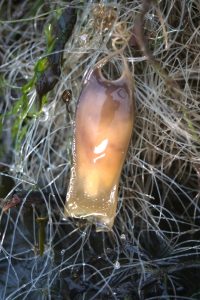
These are the egg cases of sharks, skates, and rays (class Chondrichthyes). They can often be found along the tideline tangled in the seaweed. They come in many different shapes, sizes and colours, depending on the species. Not all Chondrichthyans lay these egg cases, as some give birth to live young. Those that do lay eggs often do so on the seafloor to hide them from predators and to keep them from floating away until they’ve hatched. The exact species can be hard to identify, but there is an online guide that may be useful.
Marine worm tubes
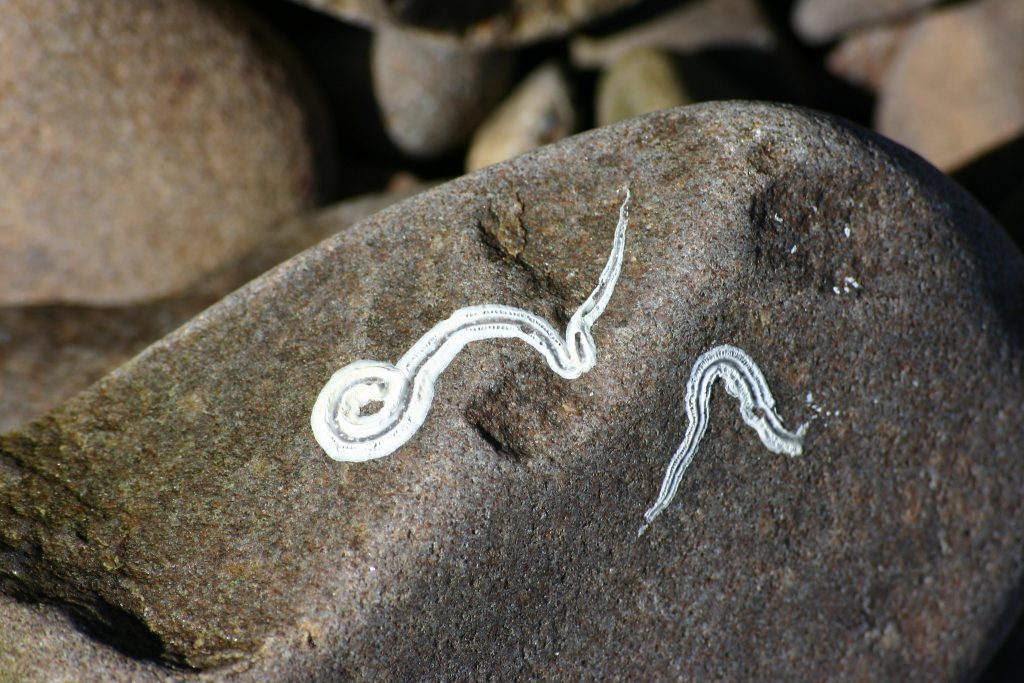
Several species of marine worms form calcareous tube structures on rocks, pebbles and shells. These tubes are white, irregularly curved and are a triangular shape when first made. Over time, they can become eroded to two thin white lines. They’re common across our coasts, but rarer finds are objects covered in hundreds of these tubes.
By-the-wind Sailor (Velella velella)
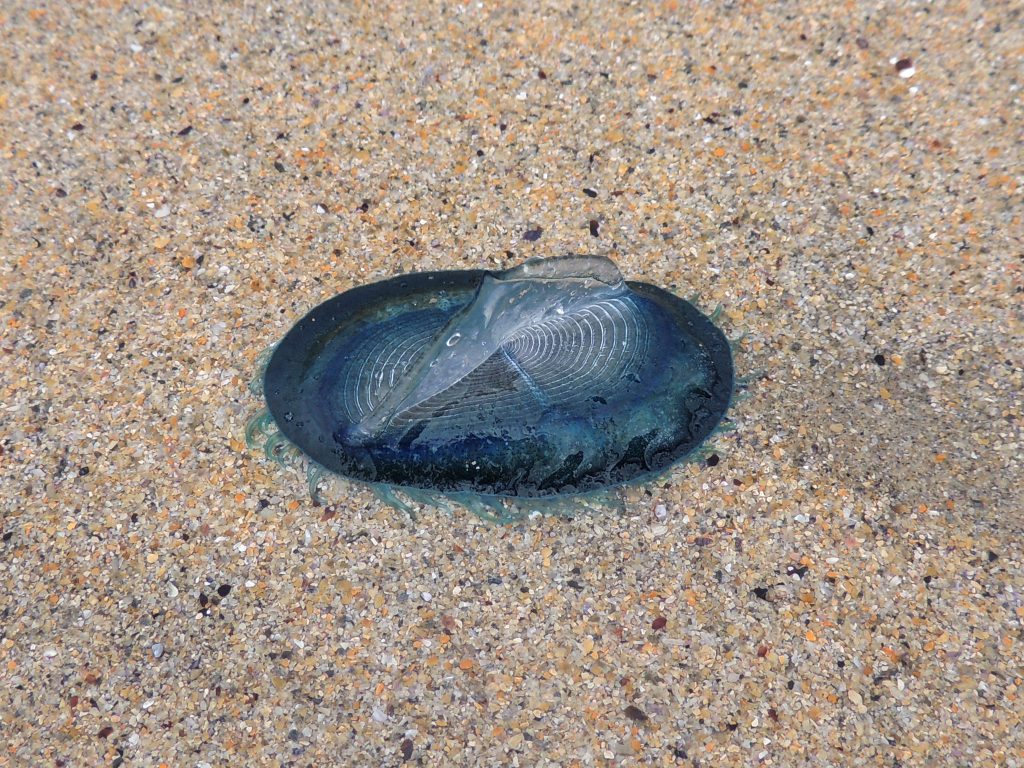
This species may look like a jellyfish but it’s actually a hydrozoa. It is known by many names, such as sea raft, purple sail, or little sail. This species is often mistaken for the Portuguese man o’war, but its sting is much less painful to humans. Often spotted around the UK coastline, particularly after a storm, the by-the-wind sailor can be an interesting sight while beachcombing.
Common Whelk eggs (Buccinum undatum)
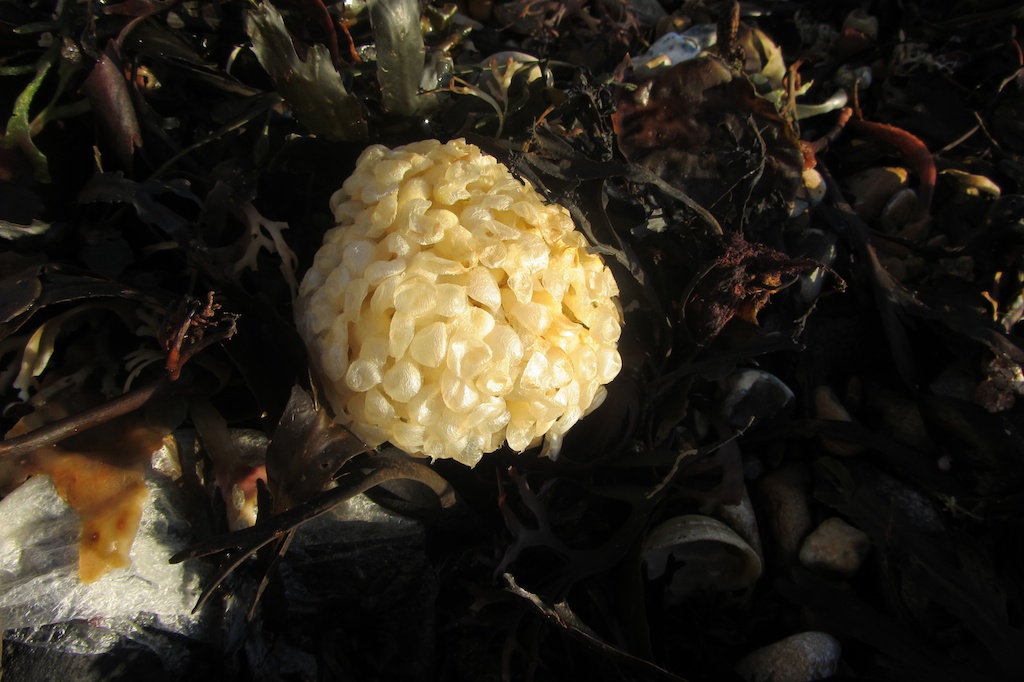
The common whelk is a large marine gastropod found along the shore of the UK. The empty egg cases, formed in a ball, can often be found washed up on beaches during the summer. They have several colloquial names, including sea wash balls, egg clouds and fisherman’s soap.
Fossils
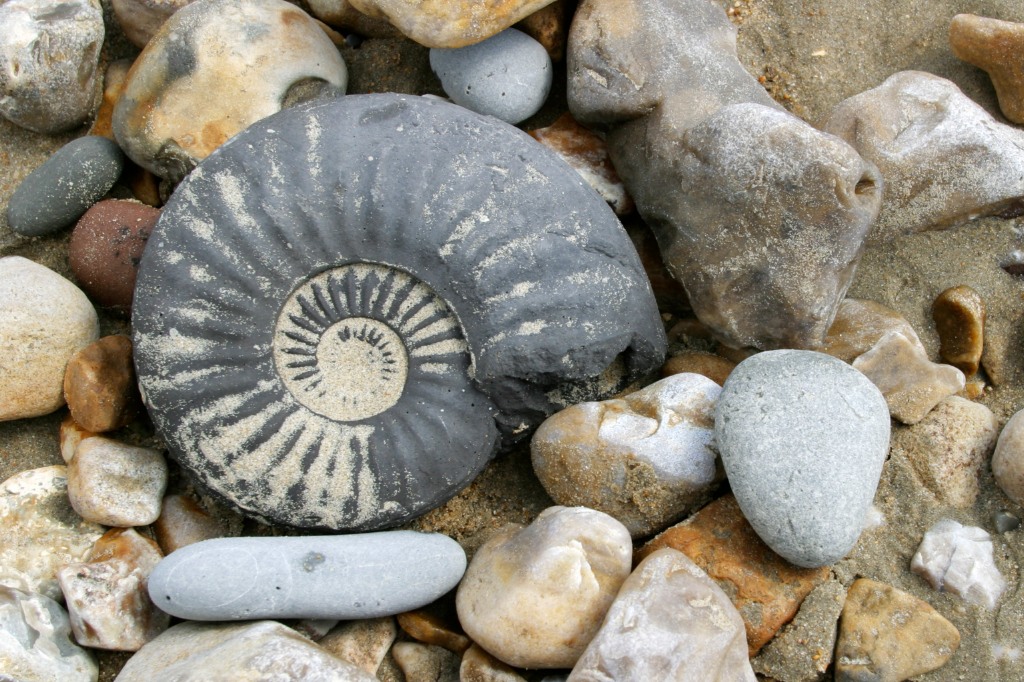
Fossils are physical records of history and one of the main attractions for many beachcombers. Very simply, fossils are formed when organisms are buried in sediment, and as this sediment becomes compacted by heat or pressure, it turns to rock, leaving behind the exact shape or an impression of an organism.
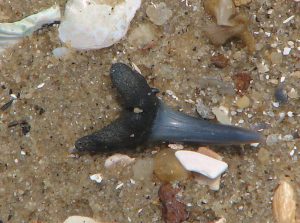
There are several beaches, such as Charmouth in Dorset, where fossils are more likely to be seen, but they can be found on any shoreline. There are several guides on how to safely and sustainably search for fossils. The main guidance is to never hammer at cliffs (as they can be unstable), be careful around fragile habitats, and limit the amount of damage you do when extracting fossils. It is better to leave a fossil uncollected than to destroy the area it is held in.
Seashells
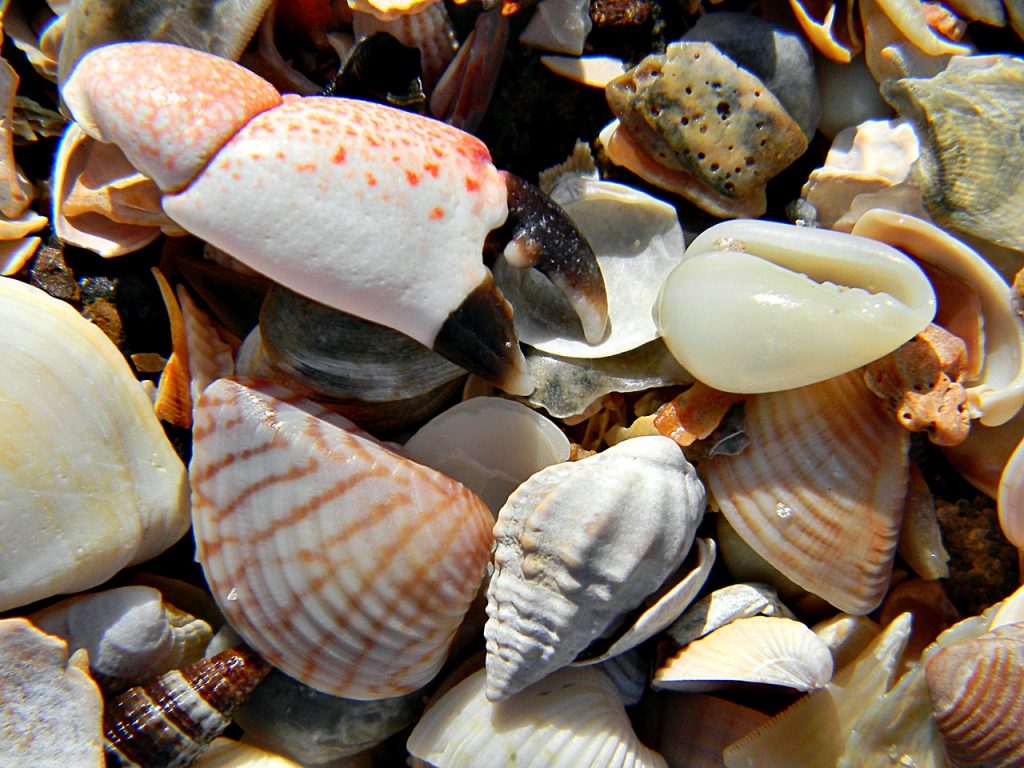
Seashells are the hard, protective outer layer of marine invertebrate species. Empty shells often wash up on beaches and shells from molluscs, barnacles, sea urchins, and crabs can all be found on the shoreline. As they are primarily made from calcium carbonate, seashells can be used in the production of lime. They’re also used in art, as poultry feed, musical instruments, and play a part in religion and spirituality. Throughout history, they’ve been used as decorative items, tools and currency.
Cuttlebone
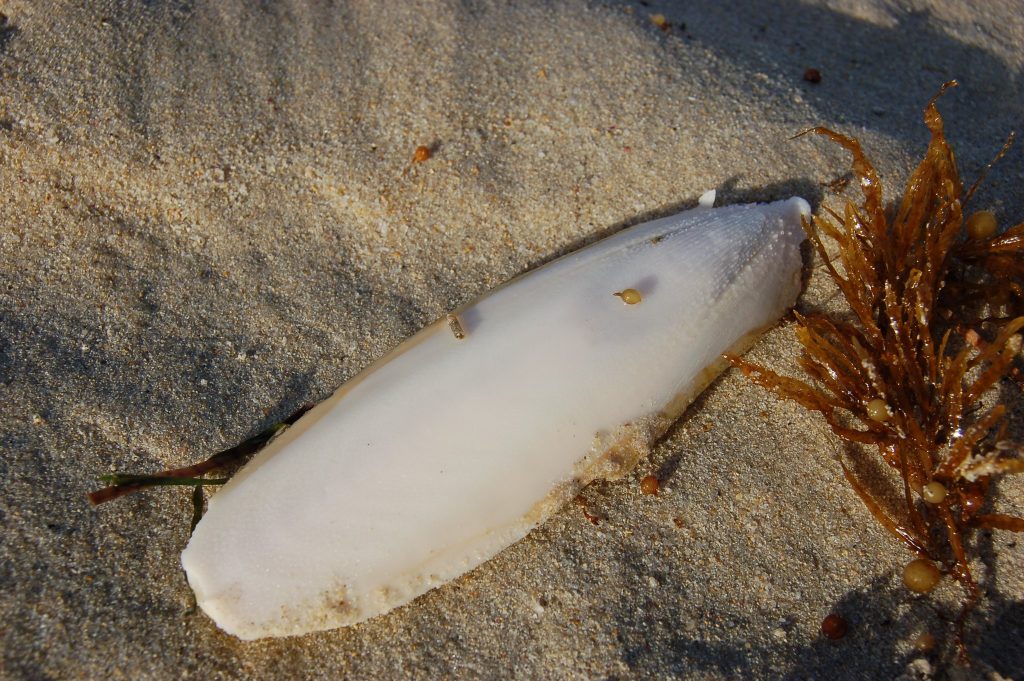
Also known as a cuttlefish bone, the cuttlebone is a hard and brittle structure that forms an internal shell in all cuttlefish (order Sepiida). They can be found along the coast and have several historical uses. They were ground up to make polishing powder, which was used by goldsmiths and added to toothpaste. Cuttlefish bones were also used as an antacid. Today, they are more commonly used as a dietary supplement for pets such as birds, reptiles and shrimp, as they are rich in calcium.
Manmade
Sadly, you may also find a huge variety of manmade items on the beach. While beautifully painted tiles, sparkling sea glass and ancient treasures may be a highlight of your beachcombing trip, you are far more likely to see washed up fishing gear and plastic.
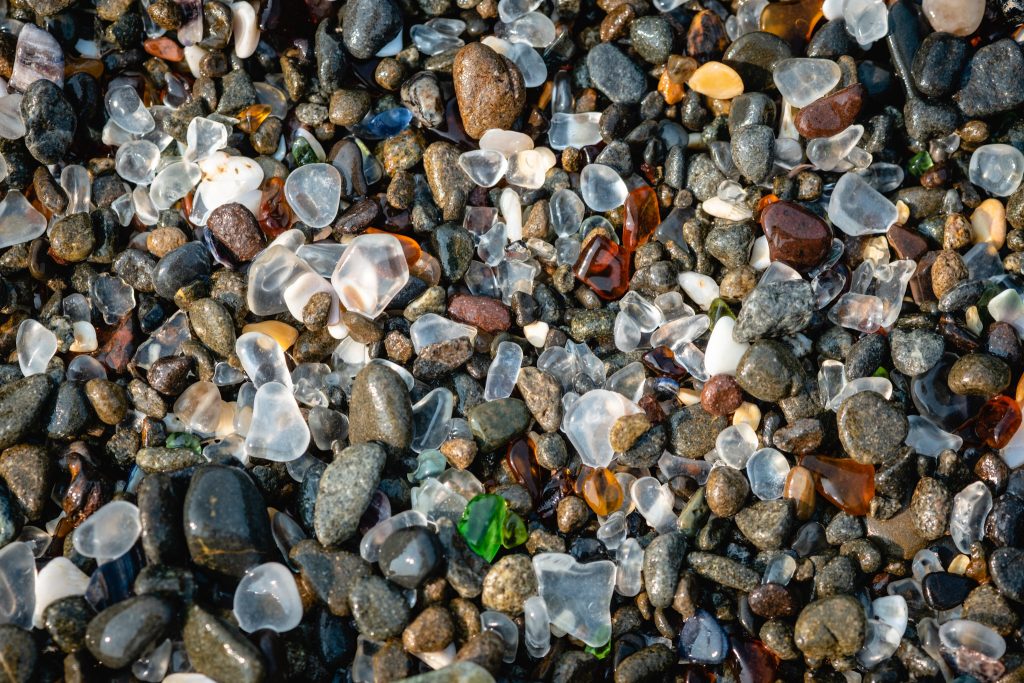
Fishing gear
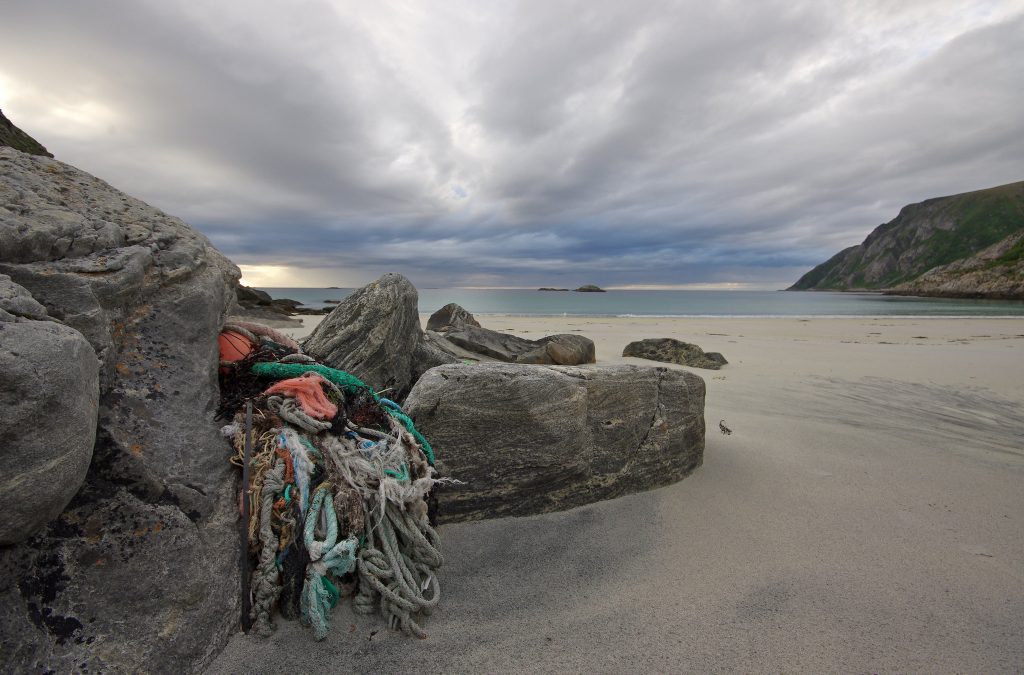
Dumped fishing gear, both intentionally and accidentally, is thought to be the biggest contributor to marine litter. One study found that 70% of macroplastics on the surface of the ocean was related to fishing. Another study found that 86% of the macroplastic in the great Pacific garbage patch was fishing nets. These often also wash up on our beaches, tangled together with many different manmade and natural items, and even wildlife.
Other plastics
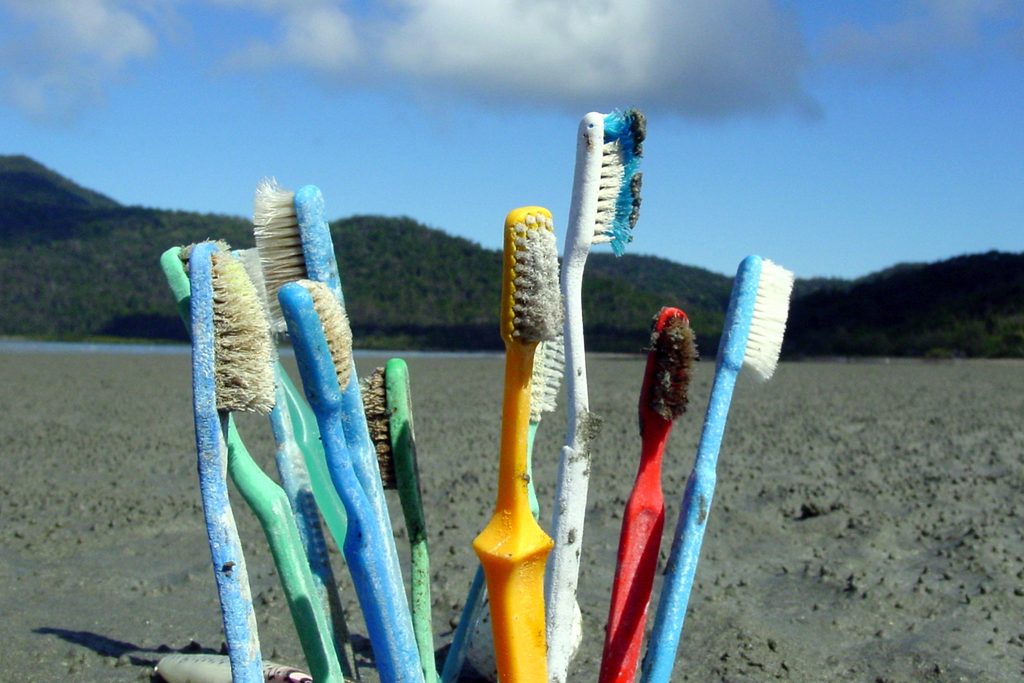
Beaches can be covered in plastic, particularly after a storm. This is especially true if there is no action plan in place for keeping the beach clean. There are many volunteer groups you can join, or you can organise one yourself, that complete beach cleans. While beachcombing, bringing a bucket or bag with you to collect any plastic or litter is a great way to help your local environment and community.






